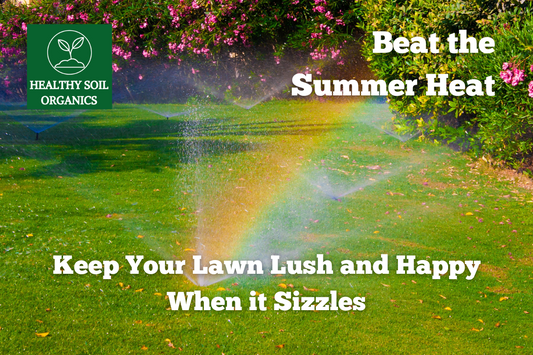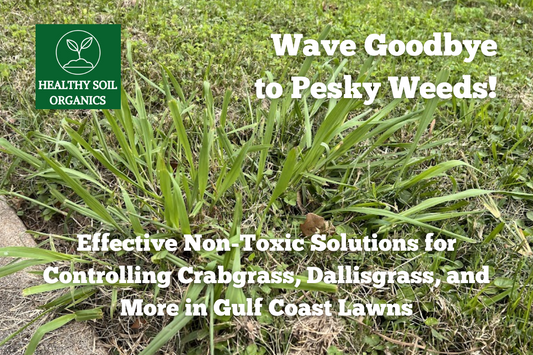Welcome to our latest adventure at HealthySoilOrganics.com, where we're rolling up our sleeves and getting down to earth—quite literally! If you're gearing up for a bountiful spring and summer, free from the tyranny of weeds, then you've landed in the right spot. Today, we're cooking up something special in the garden: "Landscape Lasagna." And no, we're not talking about picnicking among your petunias (though that does sound lovely), but about a revolutionary way to prepare your landscape beds organically. Buckle up, green thumbs, as we layer up the goodness!
Step 1: Trim the Greens
First things first, let's clear the table. Grab your garden shears and cut down any tall, unwanted guests (aka weeds) in your landscape bed. No need to dig them out or go on a chemical warfare; we're just giving these plants a little off the top. Any low-lying greenery can stay; they're part of our lasagna now.

Step 2: Season Generously With MicroLife
Once the area's prepped, it's time to sprinkle some magic. We're big fans of MicroLife Ultimate 8-4-6 granular fertilizer for this step. Why? Because it's like the secret sauce of our garden lasagna. It enriches the soil, making sure our next layers have all the nutrients they need to cook to perfection.

Step 3: Lay Down the Noodles (Cardboard, That Is)
Now, for the fun part. Grab some cardboard boxes (tape-free, please—we're going all-natural), and lay them out as your base layer. This cardboard acts as a biodegradable barrier, keeping future weeds at bay while letting your plants play. Think of it as the noodles in your lasagna, holding everything together but eventually melting into the mix.

Step 4: Water it Down
Before we add our next layer, let's give the cardboard a good soaking. This step is like adding broth to a stew; it helps everything meld together, breaking down the cardboard and encouraging the decomposition process. Plus, it's pretty satisfying to drench the cardboard and imagine the magic happening beneath.

Step 5: Top With Mulch
To cap off our masterpiece, we're going to shovel on a layer of Native Hardwood Mulch, about 2-3 inches thick. This year I'm using a lovely native hardwood mulch from Casco Organics, our newest soil supplier. This is the cheese on top of our lasagna, if you will. It locks in moisture, adds another layer of nutrient-rich goodness, and, most importantly, hides our cardboard from prying eyes.

The Magic Underneath
Now, here's where Mother Nature steps in as head chef. Over the next 8 -9 months, the cardboard will decompose, attracting a bustling community of microbes and earthworms. These little workers will till the soil for us, leaving behind the crème de la crème of compost: vermicompost. By the time you're ready to plant next season, you'll find rich, fertile soil where once there was cardboard. It's like alchemy, but with worms!
Ready, Set, Grow!
And there you have it, folks—your guide to creating a "Landscape Lasagna" that will make your garden the envy of the neighborhood. This method is not only fun but incredibly effective at suppressing weeds, enriching the soil, and preparing your beds for a flourishing season. Plus, it's an excuse to play with cardboard, and who doesn't love that?
So, what are you waiting for? Get out there and start layering! Your garden will thank you, and you might just find yourself looking forward to weed control (now, wouldn't that be something?). Remember, gardening is supposed to be fun, and with "Landscape Lasagna," it's a delicious adventure.
Keep checking back for more organic gardening tips and tricks. And don't forget to share your "Landscape Lasagna" successes with us. Happy gardening!




